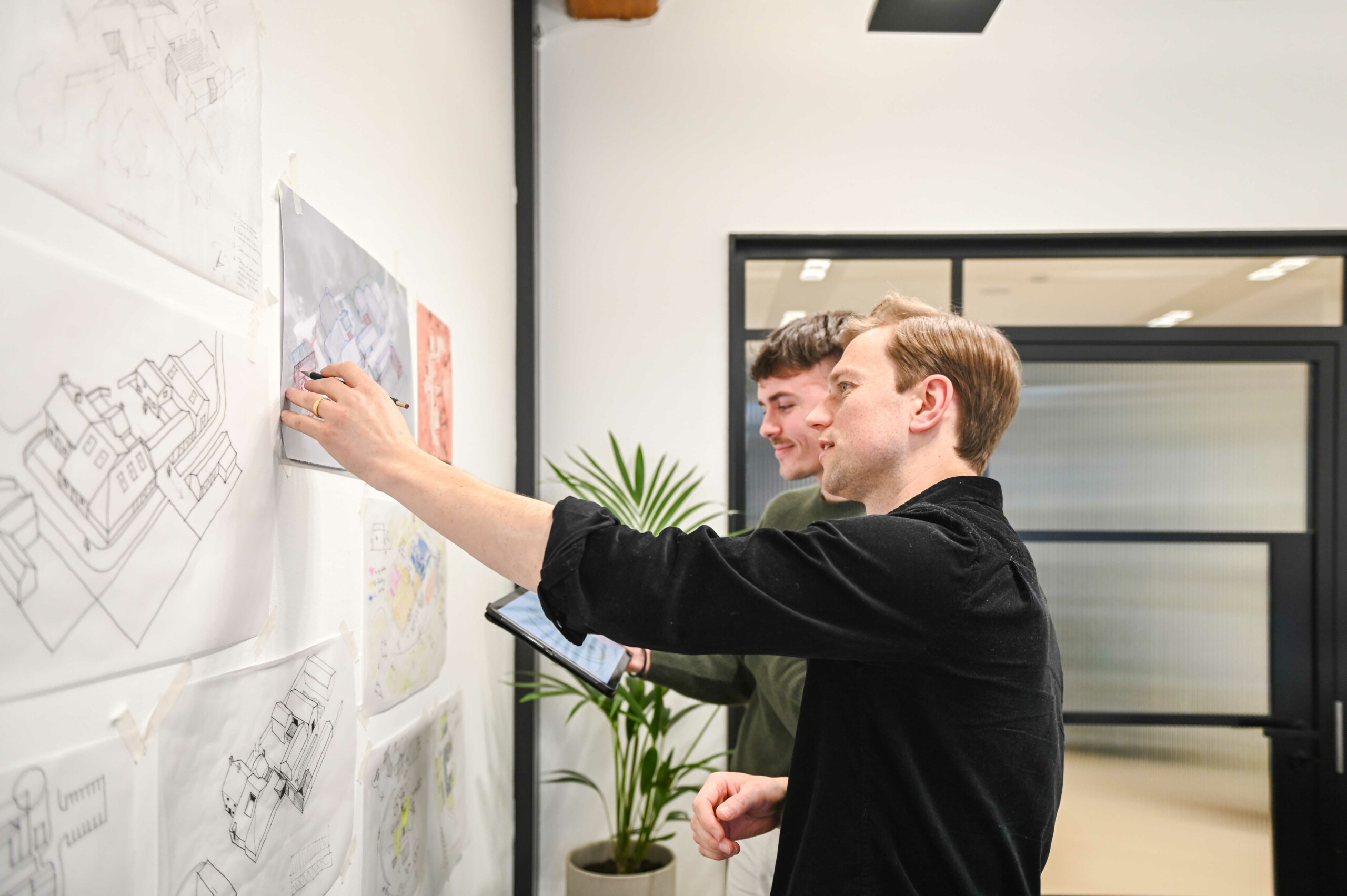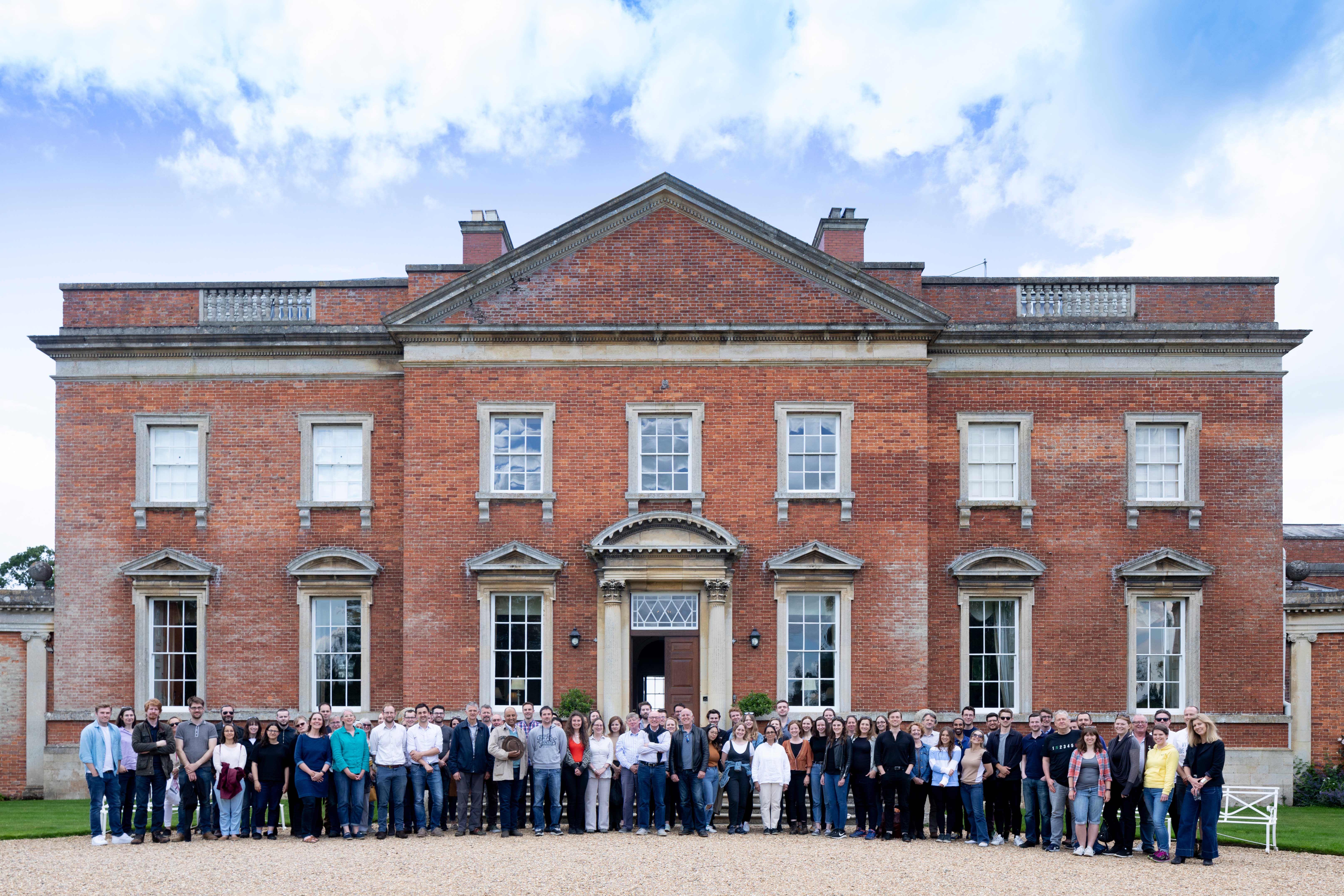We have signed both Architects’ Declare and Heritage Declares making an open pledge to these commitments and recognising the twin crises of climate breakdown and biodiversity loss.
In advocating the repair and adaptation of existing buildings, Donald Insall Associates has established building conservation as an inherently sustainable approach to architecture, both in terms of retaining the embodied energy of the building as well as stewardship of the historic environment, or its ‘spirit of place’.
Each building is unique, and we do not impose standardised solutions to building conservation and reuse in order to achieve the best results for the building, its inhabitants and our clients. We carefully study each building and diagnose its defects to inform how to reduce the building’s energy consumption, improve the users’ environment, and ensure a sustainable future for the building.
Donald Insall Associates’ 10 Points on Sustainability

1. Expertise
We have been ‘retrofitting’ many of the UK’s most significant and important historic buildings for over 65 years.
Our clients look to us to design and implement viable and appropriate change in their buildings, large and small, to meet the challenge of the climate emergency.
Our knowledge-based analytical approach informs creative, appropriate and sustainable solutions.
We don’t keep still on this and have a standard in-house sustainability training regime where we bring in experts from other disciplines as well as showing knowledge between our teams.
Getting our clients’ buildings ready for the challenges posed by the climate emergency is not an ‘additional service’ but is now an everyday task.
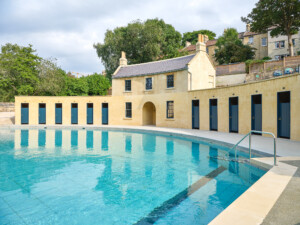
Cleveland Pools, where work completed in 2022 restoring the historic open-air pools to their original use as a sustainable community facility.

2. Research
Most of our projects encounter new technologies and materials; we learn more on every job and share this experience across our studios. We know that much of what is on the market will do little to meet net zero carbon reductions and/or will be too expensive for many clients.
For instance, we have instigated a joint research project with Grosvenor to explore and share sustainable and economically viable solutions. We employed a Researcher to find all current information from many other organisations and have used this information to inform proposals for alterations, thermal upgrade and insulation on a historic cottage.
The work has been supported by the local authority and is currently on site.
Crucially, the finished building will be monitored when in occupation and the results will be freely shared.
The practice has also been expanding its research into sustainable practice in other ways, including the following two key areas.
Building Information Modelling (BIM) – Insall’s BIM strategy has been put in place to align with the government’s ‘Information Management Mandate (IMM)’; part of the ‘Transforming Infrastructure Performance Roadmap to 2030’ which aims to achieve net zero carbon. This utilises software to calculate the carbon footprint of our proposed designs, increases awareness of our carbon output, increases efficiency, and helps reduce waste over a building’s lifecycle. We are also currently reviewing the use of a Product Data Template (PDT) which would act as a checklist within our specification system, to safeguard compliance with the IMM requirements.
Retrofit Study – Our recent retrofit study project (in coordination with The Grosvenor Estate) of a traditional dwelling in a Cheshire village allowed us to examine ways to keep up with the moving industry standards of energy consumption, whilst not compromising the historical and architectural significance of a building. The study has allowed us to trial new fabric-sensitive and economically-viable methods for limiting carbon footprints. The project resulted in a design guide, provided a framework for future projects, proposed strategies that could be implemented by a non-specialist workforce and produced a comprehensive report on insulation solutions (compiled by an academic research student over a 10 week period). See the Insall Review 2020 ‘Retrofit a Traditional Dwelling’ for more details.

3. Promote the Role of Heritage
Aligning ourselves with ‘Heritage Declares’, we are passionate about the role of historic buildings in meeting our net zero carbon future challenge. Our focus is equally on fighting for the future of our heritage and ensuring old buildings are not ‘stranded’ by factors such as EPC ratings.
Again, in partnership with Grosvenor we have published a paper on the subject, have written in the press and organised conferences and spread the message at industry events.
Insall colleagues are also actively involved in campaigning groups, such as Heritage Declares and ACAN (Architects Climate Action Network). Through these groups we have been involved in campaigning for a more sustainable industry, knowledge-sharing, and policy change.
Some examples of other work we have carried out:
- Helping organise the Therapeutic City festival in Bath, involving a series of events focused on creating healthy cities.
- Writing a Sustainable Construction and Retrofitting Supplementary Planning Document, which is currently out for consultation, for Bath & North-East Somerset Council.
- The Heritage and Carbon report which we helped to write in consultation with Grosvenor Britain and Ireland, the National Trust, Historic England, Peabody, Southern Housing Groupand The Crown Estate, argues that historic buildings can play a leading role in the fight against climate change. But to do that, five core issues have to be addressed: policy, guidance, cost, supply chain skills and capacity in local government.

4. Our Studios
We picked the low-hanging fruit some years ago on such things as green energy tariffs, recycling, local supply chains, and insulating our buildings.
The Practice is measuring its Carbon Footprint and is currently finding ways to further reduce our own impact on the planet. Every little helps.
The practice proactively vets its supply chain, regularly checking new and existing suppliers’ environmental credentials. Where possible goods are sourced locally, where this is not possible, goods are sourced from sustainable sources.
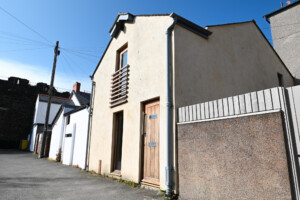
Our Conwy Studio, May 2023

5. Travel
Our cross-office meetings are now mostly held virtually on ‘Microsoft Teams’ and we have introduced hybrid working, reducing commuter travel still further. We insist on public transport where practicable and pay an additional mileage rate to encourage electric car use where not possible to travel by train.

6. Sustainability Group
We have a Sustainability Group formed of “champions” from each studio countrywide, who meet regularly via video conferencing, to share experience and knowledge, and continually push ourselves to do more to reduce the carbon footprint of running the practice and on our projects, and to make recommendations for improvement. We are ISO 14001 (Environmental Management Systems) accredited (for both running the practice and for projects), and our environmental credentials on projects have also been recognised in a number of Green Apple awards.
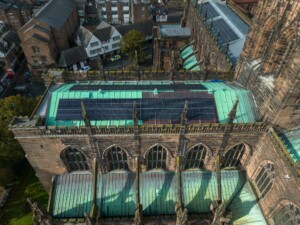
Chester Cathedral Solar Panels (c) Luke Unsworth

7. Carbon Mitigation
Where carbon footprint is unavoidable, we have for some years mitigated our residual carbon footprint through tree planting in the UK. We are pleased to offer clients a tree at the end of each project, not only to say thank you for choosing us, but to offset our own carbon use on their project.
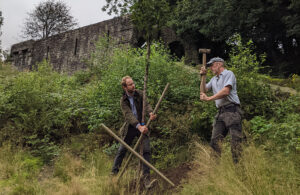
Rivington Gardens Tree Planting

8. Embodied Carbon
Arguably the most environmentally sustainable building is the one you already have – its retention, repair and reuse i) avoids the unnecessary carbon footprint associated with demolition to build a new building, and ii) retains the embedded carbon of the existing the building. We aim to retain as much as we can of the existing buildings, and to maximise opportunities for reuse. We have been doing this since 1958. We believe it is important to take into account whole life carbon footprint – not just energy in use – and to take the long-term view, (avoiding short term projects) designing flexibly, and specifying long lasting relatively local materials and products, where possible. In this way environmental sustainability and conservation work together towards achieving common objectives.
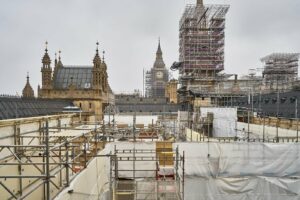
Work taking place at the Palace of Westminster

9. Natural Materials
Being a practice that specialises in the historic built environment, we specify and design with natural materials on a daily basis. Using modern building materials can not only be detrimental to the performance of a traditional building, but they often come with a high carbon footprint. Natural materials such as stone and timber can also form part of a circular economy where the materials can not only be repaired and reused within the use of the building, they can also be easily dismantled and reused in alterations or new buildings rather than discarded to landfill.
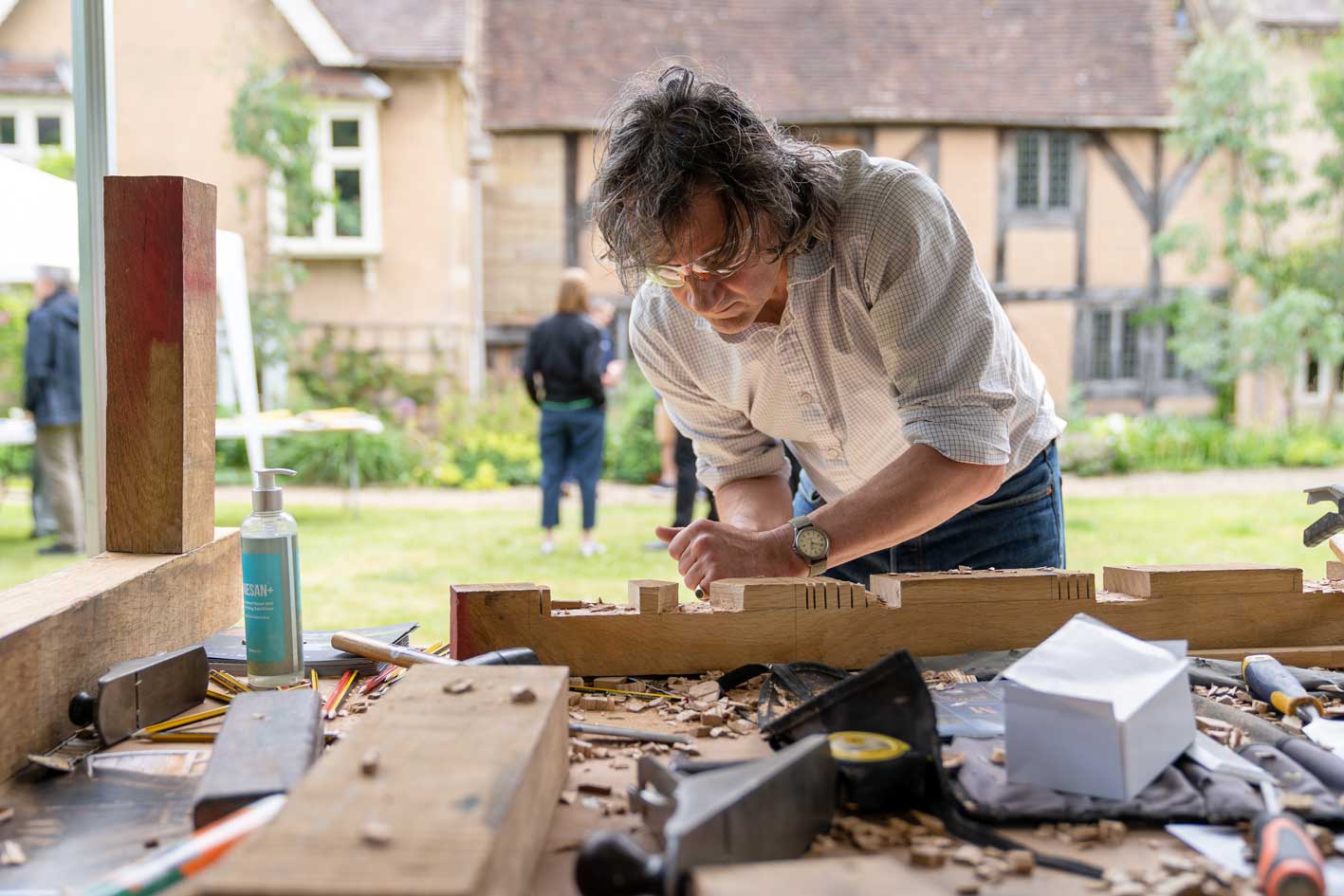
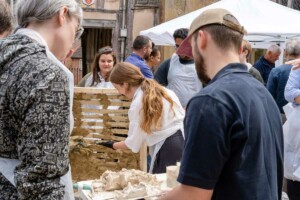
Exploring the use of natural materials at the 2022 Practice Training Day

10. Carbon Reduction Plan
Click here to see our Carbon Reduction Plan!
